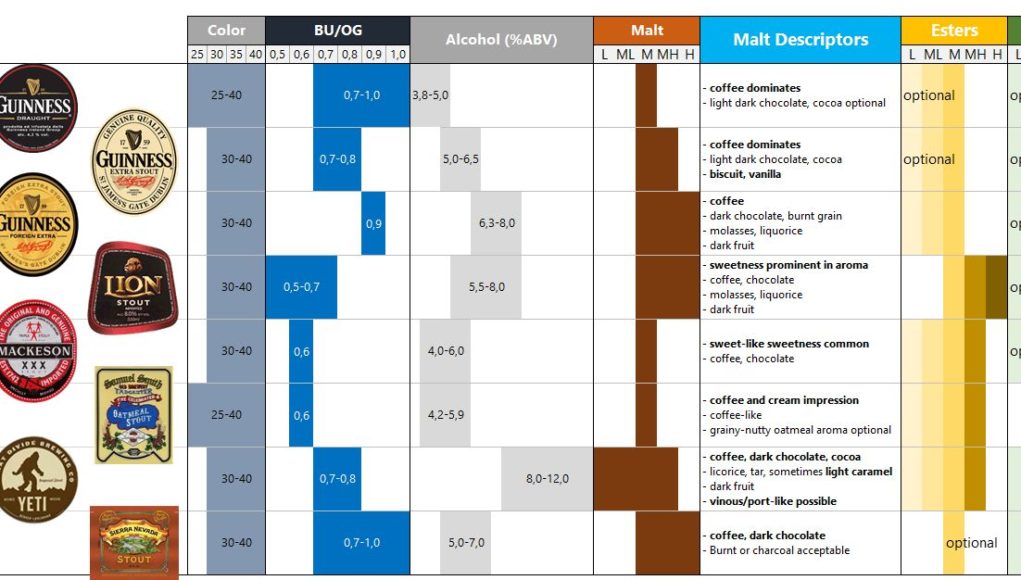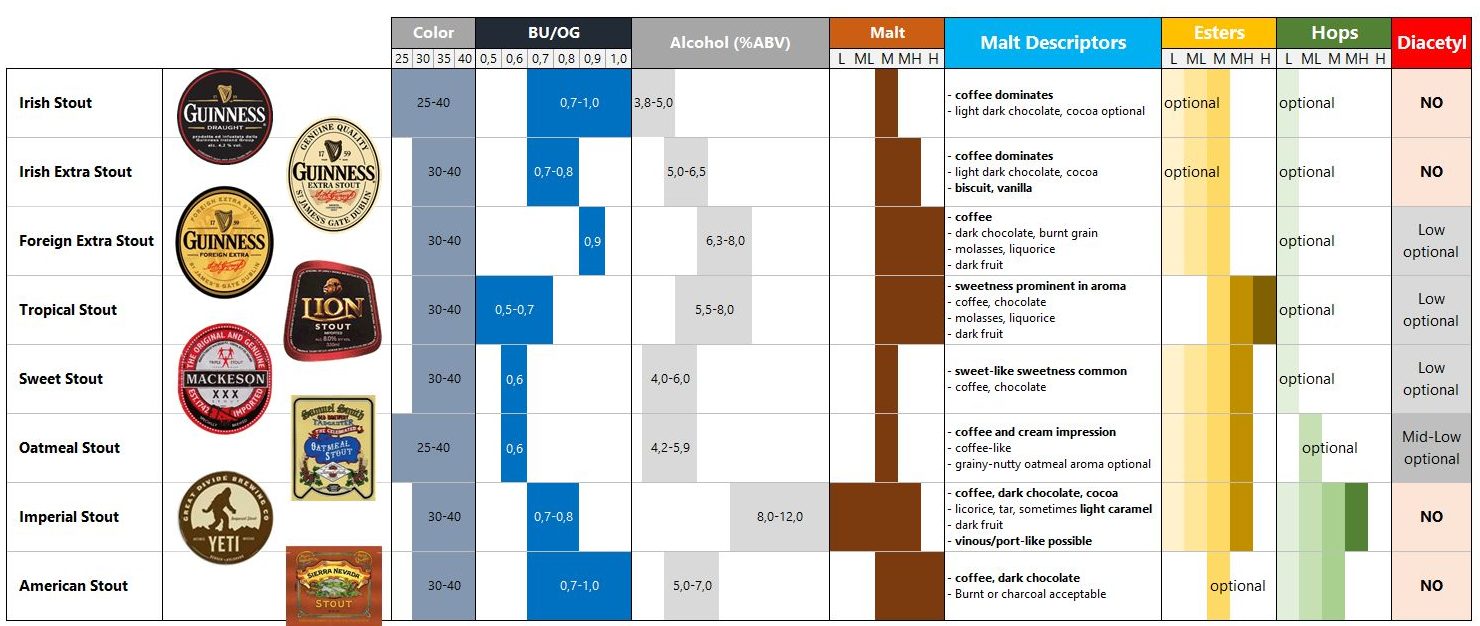Here goes another infographic that I made, which is helping me memorize the infamous style parameters for the BJCP Written Exam. The first infographic I put together was about Belgian Beers, this one is all about stouts as described in the BJCP 2021 Guidelines. Some general thoughts on that below.
Predictably, all the descriptors look very similar: coffee everywhere, chocolate likewise, almost no caramel or other subtle Maillard descriptors. Except the Irish Extra Stout, with some biscuit and vanilla, and the Imperial Stout, where some caramel can be detected.
Malt intensities start almost always from medium. Oddly enough, the only style with an intensity range which covers the low end of the spectrum is the Imperial Stout. Did you expect that? Keep that in mind when judging this usually bold style.
Oatmeal and Sweet Stouts are much similar in multiple aspects, not easy to tell apart just by reading the guidelines. ABV is similar, balance is similar, malt and hopping are similar. Oatmeal Stout can be a tad less brown, but overall they kind of overlap. Sweet stouts should be a bit more on the sweet side, but IBU and BU/GU ranges are actually the same. So, it’s not that obvious.
Diacetyl is off Irish and American stouts, but can be tolerated in UK stouts. Imperial Stouts can be either English or American, but no diacetyl is allowable either way.
Esters generally range from low to medium, except for the Tropical Stout where they can go up like an esters bomb. There is to say that in the BJCP Guidelines dark fruits are often considered esters, so in this case I think the fruity-side is the dark fruit which comes from the malt more than the classic pome fruit or banana from fermentation. Same thing for the Imperial Stout, which on top of that can show some oxidative, sherry-like fruity aromas.
An important thing to remember, in particular when judging at competitions, is that American Stouts (but the same goes for American Porters) can have low hop aroma. Their “American” character being more about the strong roasted aromas/flavours and the overall balance, which stretches towards the bitter end. Some interpretations, the less hoppy ones, can actually look somewhat similar to a sort of “Imperial Irish Stout”.







